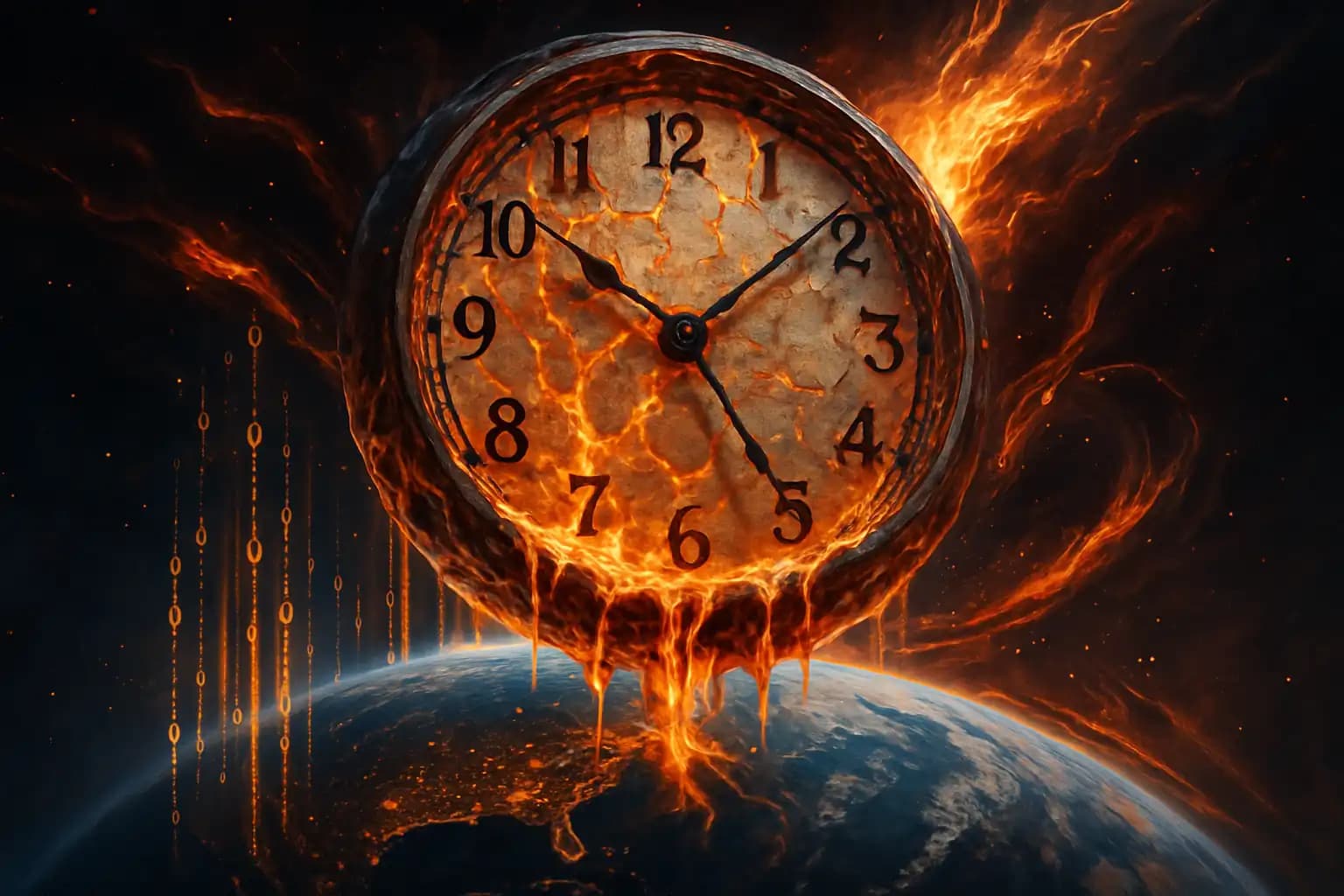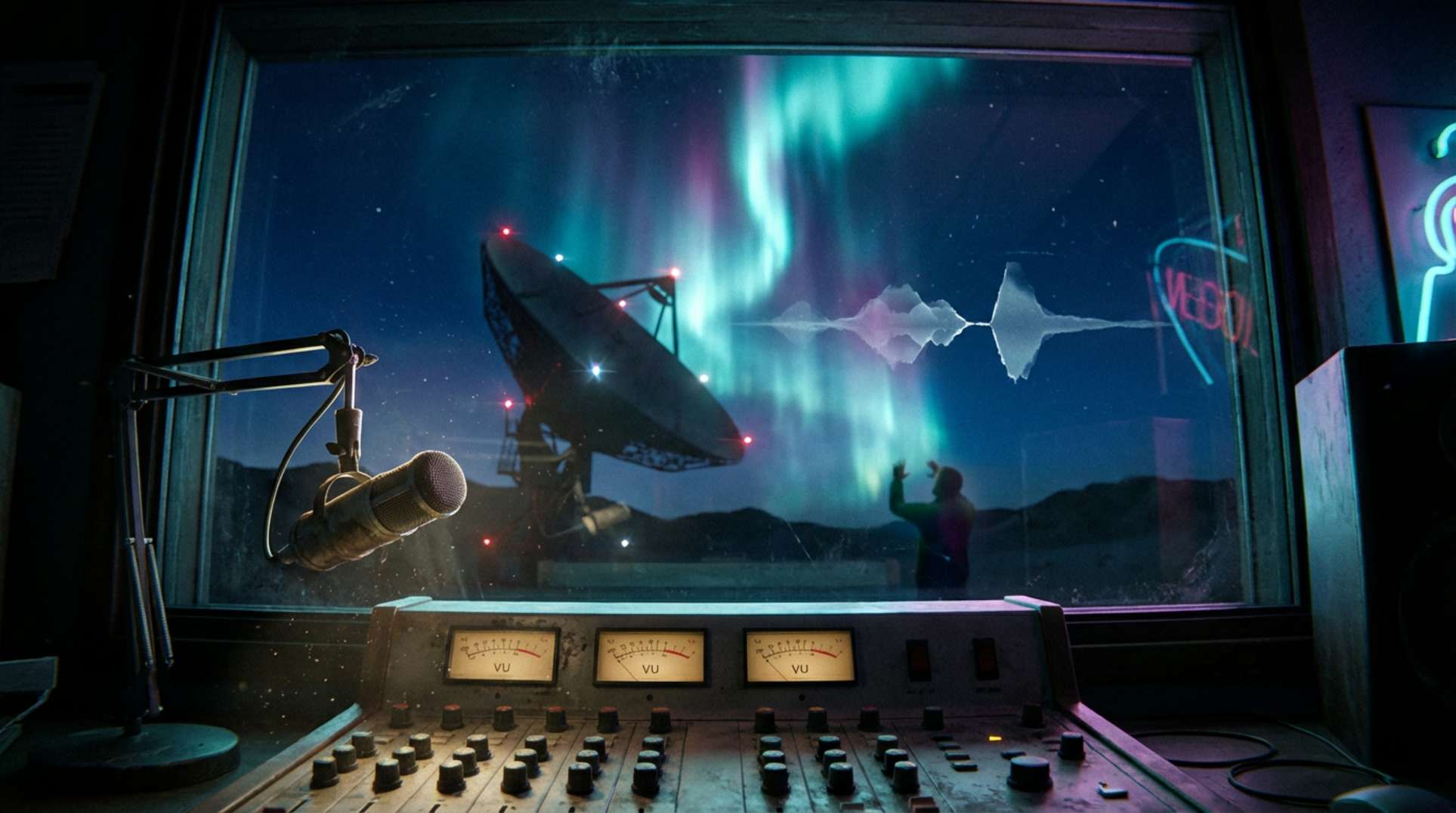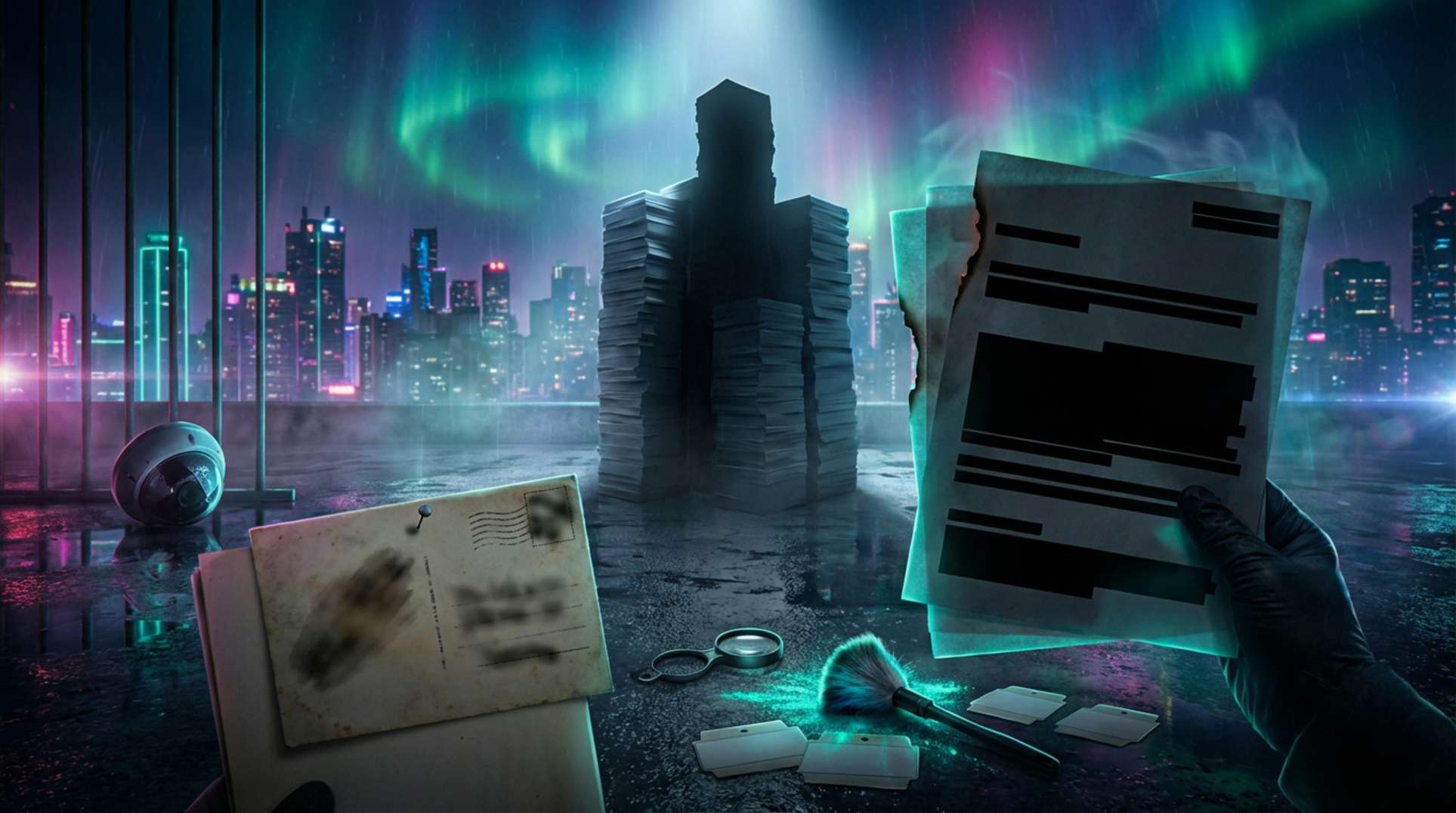The YouTube thumbnail announces in 72-point font—WE’RE IN THE LAST DAYS—yet the data captures attention more than the drama. Solar physicists confirm the most volatile sunspot cycle in decades. Cybersecurity firms track AI-generated malware that morphs faster than patches can deploy. The Bulletin of the Atomic Scientists holds the Doomsday Clock near annihilation. Internet hysteria can be dismissed, but lab graphs and satellite charts fuel the frenzy. Closing margins feel less like prophecy and more like an actuarial spreadsheet, with red ink spilling across rows.
This summer, major research campuses echo the refrain: “We’re running scenarios.” Some model cascading grid failures from geomagnetic storms, while others simulate bond-market collapses when polar ice melts, invalidating coastal real-estate portfolios. Everyone seems to have found a new way for the twenty-first century to go sideways. The bigger revelation, however, is how these risks intertwine—threads in a single, fraying tapestry.
Doomsday Clock Metrics and the Shrinking Safety Margin
When the Bulletin of the Atomic Scientists reset the Doomsday Clock to 89 seconds to midnight, critics shrugged. They dismissed it as symbolic and a fundraising gimmick. But symbols gain weight when metrics agree. Nuclear arsenals modernize, climate anomalies rise, and synthetic biology promises custom pathogens from desktop printers. Even veteran strategists blench at tables combining warhead counts, carbon curves, and algorithmic hacking into one compound risk score.
That score inches upward. Strategic-studies scholar Marisol Chen highlights the revived Russian “Dead Hand” doctrine, an automated retaliation program resurfacing in leaked transcripts discussed in a recent investigative brief. Combine an aging early-warning radar network with AI-spoofed launch telemetry, and you create a hair-trigger condition where software bugs outpace diplomats. When you consider how few humans may stand between a false alarm and a real mushroom cloud, the clock’s second hand feels less theatrical.
Electromagnetic Anomalies: Schumann Resonance and the South Atlantic Dent
The geopolitical stage is not the only place where minutes vanish. High above Brazil, Earth’s magnetic field sags into the South Atlantic Anomaly, a radiation funnel known for corrupting satellite memory. Engineers report that the dent has split into twin lobes, each expanding faster than models predicted—a trend detailed in this field report. Every time a weather satellite reboots in that corridor, forecasting loses clarity; every corrupted GPS packet nudges airliners closer to navigation crises.
Meanwhile, the planet’s heartbeat—the extremely low-frequency pulse known as the Schumann resonance—has started doing drum solos. Instruments clipped during a May surge, unexplained by routine lightning counts. This spike forced researchers to analyze nine years of baseline data, culminating in a peer-reviewed paper hosted at Wiley’s geophysical archive. Field theorists debate whether solar wind compression, ionospheric heating, or a deeper magnetohydrodynamic shift drove the anomaly. Power-grid managers don’t care; they just know ELF surges leak into transformer cores, the same way harmonics once tripped the Northeast blackout of 2003.
AI-Generated Malware and the Weaponization of Code
Even if the sky weren’t chaotic, humanity injects chaos through silicon. In May, Unit 42 researchers at Palo Alto Networks unveiled a proof-of-concept worm written by ChatGPT prompts that rewrote itself, evading 60 out of 62 antivirus engines. Their full analysis is available at the company’s threat-intel blog. It reads like a technothriller: LLM-built polymorphism, runtime environmental checks, and autonomous payload selection.
Military planners fear the potential for nightmare synergy. Imagine an AI worm that seeds false seismic data, misleading emergency-alert systems during genuine quakes, like the one under Yellowstone discussed in this geological briefing. Panic would compound infrastructure stress precisely when resilience matters most. Cyber defenses must thus patch at machine speed—yet each patch unveils new exploit opportunities, leading to a Red Queen race with no finish line.
Climate Extremes and the Cost of Meteorological Roulette
While circuits fry and software mutates, the atmosphere delivers its own gut punches. The jet stream now meanders like paint spilled across a globe, dropping Saharan heat on Berlin and polar vortices on Miami. Farmers in Kansas lose wheat to surprise blizzards; vintners in Bordeaux toast vines at midnight to fend off June frost. Commodity traders label these swings “sigma events,” but sigma lost meaning as record charts reset each quarter.
The insurance sector increasingly views once-in-a-century storms as inevitable. Actuaries analyze multi-hazard datasets, many compiled after the drone-filmed Himalayan melt featured in this climate-risk memo. Numbers tell a grim tale: for every tenth of a degree above the Paris target, global GDP takes a one-percent hit. And unlike tech valuations, GDP funds levees, vaccines, and blackout backups—the dull but critical tools that keep civilization humming.
Psyche Under Siege: Prophecy Culture Meets Algorithmic Amplification
Humans do not handle compound risk well. Social media feeds inject dopamine into fear stimuli, transforming statistical briefings into viral doom memes. This pipeline runs hottest when old scripture aligns with new data, as occurred when analysts linked a political summit to eschatological terms, a journey chronicled in this cultural exposé. The result: trending hashtags claim solar flares signify divine judgment or that AI worms herald the Beast.
Psychologists call it apophenia; platform engineers label it engagement. Regardless, constant dread undermines executive function, hampering societies from funding mitigation projects that could prolong the fuse. Health researchers now study “doomscroll fatigue,” a cycle of helplessness correlated with rising depressive episodes among teens tracking crisis dashboards before bed.
The Thin Line of Resilience: What Still Works
Yet even amid countdown rhetoric, green shoots break asphalt. Micro-grid pilots in Iceland survived last winter’s geomagnetic storms without downtime. A Japanese retrofit program now shields high-voltage transformers with amorphous metal cores that resist harmonic overload. In cybersecurity, open-source communities develop new LLM filter layers hours after each malware proof-of-concept emerges. A coalition of data archivists mirrors critical climate datasets across five continents, aware that corrupted satellites could sever information lifelines.
Such efforts thrive best when transparency meets curiosity. Raw documents, whether magnetic-field logs or AI-malware binaries, need public scrutiny unfiltered by engagement algorithms. Repositories like Unexplained.co fulfill that niche, housing FOIA dumps and sensor archives side by side, allowing citizen analysts to scrutinize official narratives. In a world of cascading risk, trust hinges on the ability to cross-reference, replicate, and challenge.
Conclusion: Seconds Remain, Choices Persist
“Last days” rhetoric seems bombastic—until you analyze the curves. Magnetic shielding thins, atmospheric oscillations intensify, code learns to weaponize itself, and deterrence frameworks fray. Each individual factor merits concern; collectively, they edge humanity toward the metaphoric midnight chronicled on the Doomsday Clock. However, the clock’s designers emphasize its other meaning: we set the hands, and we can still move them back.
History thrives on tight deadlines. Whether societies view the current one as a stage cue or a swan song depends on choices made before the second hand ticks again. The data streams remain active; the runway, though narrowing, has not vanished. Midnight looms, but the lights are still on. The next move—toward panic, paralysis, or purposeful action—depends on us, not the clock.





